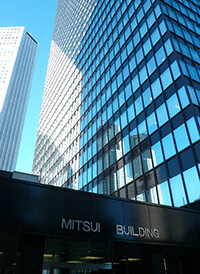2020.04.27
Changes to Japanese Design Law from April 1, 2020
1. Broadened protection for images
2. Spatial design protection (buildings, interiors)
3. Broadened related design system
4. Extension of duration of design right
5. Multiple designs possible in one application (effective within two years from May 17, 2019)
- Broadened Protection for Images
Currently, it is possible to register designs for “operation images” and “display images” of articles. An operation image is an image that can be operated by pressing or touching an icon on a screen, and a display image is an image necessary for performing a function of an article, such as a clock face. In order to be protected previously, the images had to be affixed to physical goods (images pre-installed in equipment, etc.).
In this revision, the objects of image protection are expanded, and images that are not provided in the device in advance and that are temporarily displayed via the Internet, are able to be registered (images not already affixed to physical goods). In addition, it is possible to register designs for images projected on objects other than articles; for example, optical designs. In the past, design registration was only allowed for articles, but with this amendment, a pattern or color that appears by lighting is accepted as a design. This amendment makes it possible to register designs for “light” such as from automobile headlamps and lighting equipment.
- Spatial Design Protection (buildings, interiors)
Another change in the Design Law relates to spatial design protection. Japan currently denies all design applications relating to spatial design, but this will no longer be the case after the amendments are enacted. Exterior real estate designs, such as of buildings, will be registrable. In this revision, when architects and designers build novel and creative buildings and stores, it will be possible to register for design protection in addition to protection by copyright.
Furthermore, it will be possible to register designs for interiors. Previously, real estate, like buildings and interior designs, which were composed of multiple items such as furniture, walls, floors, lighting, etc., were not registrable because it was against the principle of “one design for one application”.
Interior design made up of various components will be accepted for design registration.
- Broadened Related Design System
Japan’s related design system will also be broadened. A related design is one that can be registered after acknowledging that “there is a similarity relationship” between a design of the same applicant and a similar design.
Presently, applications for related designs can only be made within about one year after the filing of a design until the design is published. In addition, it is impossible to file an application for a related design similar only to the related design; the design in a new application must be related to the principal design, and therefore it is difficult to register a group of designs (variations).
With this revision, applications for related designs can be filed up to 10 years after the filing of the first design, and it is also possible to register designs that are similar only to related designs. It will be easier to register variations of designs, and this will be effective for building brands.
- Extension of Duration of Design Right
In addition, the duration of the design right is extended. The current protection period is 20 years from the date of registration, but this will become 25 years from the filing date. This will strengthen the protection of products with long service lives and contribute to improvement of brand power nurtured by product design.
- One Design Application with Multiple Designs
The concept of a design application in Japan has long been “one design, one application (one design right for one article)”. Once the changes take effect, an application may contain more than one design.
In addition, the classification table of articles will be abolished to allow the applicant to title the article in a flexible manner.
References:
https://www.jpo.go.jp/e/system/laws/rule/guideline/design/shinsa_kijun/document/index/overview20200401.pdf
https://www.jpo.go.jp/system/laws/rule/hokaisei/tokkyo/document/tokkyohoutou_kaiei_r010517/07.pdf


